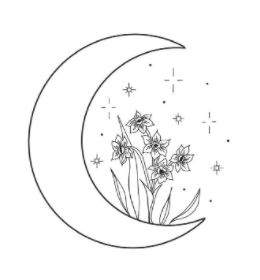Bedroom plants
What is sleep and the importance of it?
Sleep is something strange. We close our eyes, and we are gone, into another world that we experience without controlling it and that we most of the time do not experience consciously. It is time for the almost 90% of our brain that is unconscious.
Sleep is therefore often associated with death, for example, in myths and fairy tales.
We regard it as something passive and often even a waste of precious time. When time is short, sleep is the first thing that is skimped on.
Above all, sleep is something we know relatively little about. Well-established tips from grandmothers such as “A person needs at least eight hours of sleep,” and “Everything before midnight counts double” make just a little sense.

Even scientists know relatively little about this common but mysterious phenomenon compared to the knowledge about other human functions and characteristics.
Yet it is no coincidence that we spend about a third of our lives sleeping: sleep is an active process that is an essential part of our lives.
Do plants sleep too?
Various plants do sleep. For example, they close their flowers at night (e.g., “Nightshade,” “Sleeping Hat,” and “Morning Star”) or fold their leaves when they are threatened (the best known is “Herb-root-me-not”)…they react to external stimuli. (Others open their flowers in the dark (to give night insects that can detect infrared light or are attracted by particular smells the opportunity to fertilize).

Cold or drought can also be stimuli, causing plants to protect themselves against abnormal conditions. If I see it correctly, your photos show tomato seedlings. They don’t do that. They react to the cold – it can be pretty chilly at night – by straightening their leaves. But actually, I suspect that when there is a lot of light, they open their leaves wider to catch as much light as possible to grow (via photosynthesis).
Many perennials/trees/shrubs do know a kind of rest. Trees lose their leaves in autumn, and everything stands still until spring, for example. Perennials die back and retreat into their root in the ground.
What happens during sleep?
It is generally assumed that sleep serves to rest and recuperate us, and that is true. Everyone has already experienced that our alertness and concentration levels drop significantly after too short a night.
Although we do not know precisely what happens during sleep, resting our minds seems to be its most important task.
The Sleep Cycles
We sleep in different cycles made up of four phases, each with its specific characteristics.
On average, one cycle lasts about 90 to 120 minutes. There is a micro-awakening, a brief check-up to see if everything is still all right after each cycle.
If we receive certain stimuli here (e.g., light, noise, a sleeping leg, or a full bladder), we wake up for a short while to solve this. If not, we immediately start the next cycle.
It is therefore not abnormal to wake up now and then during the night.
The most important sleep phases
The most important stages of a sleep cycle are the deep sleep and the REM sleep.
During deep sleep, we receive a larger blood supply to our muscles, enabling our body to recover from the day’s efforts. Also, 70% of our daily quantity of growth hormone is secreted during the deep sleep.
This ensures that our tissues are repaired and that we recover.
As the body grows and develops most during this phase, babies and children also need more sleep than adults.
REM sleep (short for Rapid Eye Movement) is the stage of mental recovery. Our brain is very active in this stage, our heartbeat and breathing become faster and more irregular, and our eyes turn in all directions.
It is also the stage when we dream the most. REM sleep is responsible for processing the information we have gathered during the day by organizing and storing it. The data from our short-term memory is transferred to our long-term memory here.
This way, we can better apply some of the knowledge and especially skills we have learned the day after.
Your bedroom is there to sleep
Your ‘bedroom’ is meant to rest, relax, have sex, and of course, to sleep. Use it for that only!
These days, the bedroom is where we watch TV, reply to the latest e-mails and send out the latest WhatsApp with our smartphone.
All these things have a disruptive effect on your peace of mind and, ultimately, a healthy night’s sleep. We know from the blue (visible) light on these screens that it suppresses our sleep hormone melatonin’s natural production.
Besides, an exciting film, the use of social media and the information via e-mail or Internet, etc., keep your brain alert and active. This can’t be your intention if you want to sleep well and relaxed.
Banish all these things from your bedroom to not be tempted to use them before you go to sleep.
Can you put plants in the bedroom?
Some people love plants so much that they want to put them in their bedroom to brighten them up. This way, they can also enjoy the tranquillity that these plants radiate.

It used to be possible to place plants anywhere, but later criticism arose, and they were not allowed in the bedroom.
Today, scientists have become wiser: it is even better to place plants in the bedroom for the humidity level. Because heaters make the air dry, which can irritate the airways, to avoid this, our favorite plants come to the rescue.
Plants for the bedroom
Researchers have compiled six plants that they believe are most effective in improving the air in the bedroom, calming you down, and helping you sleep better:
- Aloe vera
- Jasmine (Jasminum)
- Lavender (Lavendula)
- Sanceveria (trifaseiata)
- Grass lily (Chlorophytum)
- Cape jasmine (Gardenia)
Aloe vera
Aloe vera is a fantastic houseplant. It has many health benefits and is easy to keep alive. This plant is air purifying and gives off oxygen at night, which is nice to have in your bedroom. Place Aloe Vera close to or on the windowsill because it needs a lot of light.
Jasmine (Jasminus)
Jasmine is known for its calming properties. The plant has a calming effect and thus a positive influence on sleep quality.
Lavender (Lavendula)
Lavender is a well-known plant that has a sleep-inducing effect, thanks to its calming scent. This plant reduces stress and blood pressure, making you sleepier quickly. Lavender facilitates light sleep and reduces eye movement while sleeping.
Sanseveria (trifaceiata)
These have simple green-yellow leaves and match any interior. They have an air-purifying effect. These plants also give off oxygen during the night and are good against headaches.
Grass lily (Chlorophytum comosum)
Just like Aloe vera, grass lilies purify the air. The purer the air, the better the quality of sleep. They filter formaldehyde from the air, so a few plants on the window sill prove their worth in the bedroom.
Cape jasmine (Gardenia)
This beautiful houseplant with white flowers is said to have the same effect as valium sleeping pills. A German study on mice proved this. The mice were noticeably less active in the vicinity of a gardenia than the other mice. This effect would be similar in humans. So less busy ensures more peaceful sleep.
Summarised
Sleep is an essential part of all that lives. It is necessary to allow the body and ‘mind’ to rest, organize our memories and thoughts, and recuperate physically.
Despite the importance of sleep for our general wellbeing, it is something that we are still not sufficiently aware of.
Indeed, now people are increasingly concerned with health and healthy eating; it is striking how little they concern themselves with their sleep quality.
A few minor adjustments to your habits can improve your sleep considerably and make you wake up with a fresh mind.
– Plants in your Bedroom for Healthy Growth –